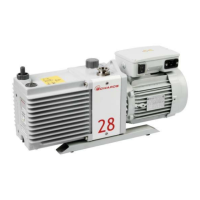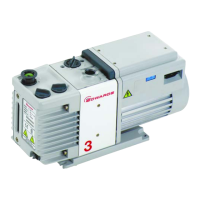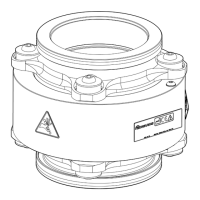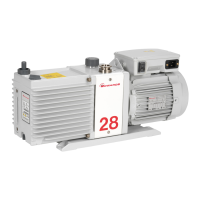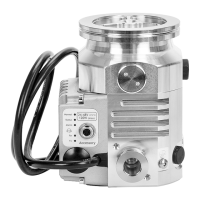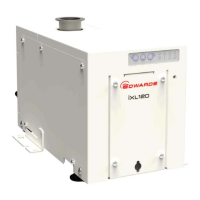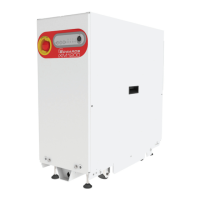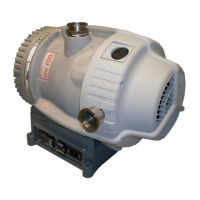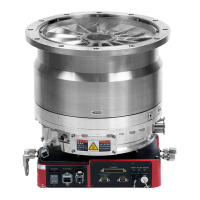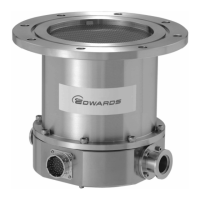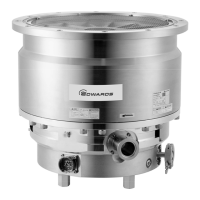Ensure that foreign matter (particulate) cannot get into the pump. If it does, it can cause serious damage and
premature failure of internal pump part.
Ensure that the vacuum pipeline is leak-tight. Install a flexible connection between the booster pump inlet and the
vacuum pipeline, to reduce vibration and prevent booster pump body distortions. Properly support the pipelines, to
minimise vibration. You must not use the body of the booster pump to support long lengths of pipelines.
We recommend that you install a high-vacuum, fully-opening valve, for ease of start-up and so that you can check
the pump ultimate pressure with no gas throughput. This valve will allow you to isolate the vacuum pumps from the
vacuum system. We recommend that you install a vacuum pressure gauge, so that you can monitor pump
performance. Install a vent valve in the booster pump inlet or foreline. Install a filter-silencer, to prevent the entry
of foreign materials into the system.
Ensure that the vacuum system and connecting pipelines are clean and free of weld splatter, dirt or grit.
Edwards recommends that you install inlet filters and traps, to prevent entry of foreign matter. If you use inlet filters
and traps, we recommend that you change the pump oil more frequently.
You may need to install other devices such as interstage temperature switches, timers, vacuum pressure switches
and so on, to protect the booster pump from thermal and mechanical overload. This will depend on the size of the
booster pump, the backing pump capacity and vacuum chamber size.
3.6.2 Accessory port pipelines
Accessory connection ports are provided in the body of the booster pump. You may use these ports to connect vent
valves and vacuum pressure gauges. Vacuum pressure gauges should be connected as follows: remove the 0.5 inch 'O'
ring plug (0.75-16 straight thread) and fit a vacuum ball valve, connected to an elevated vacuum pressure gauge. Use
a short run of vacuum pipe so that the valve is not too close to the hot body of the booster pump.
Coat all threaded vacuum joints with a liquid thread sealant (such as Loctite 714 or equivalent). Do not use tape
thread sealant, which will create small vacuum leaks.
3.6.3 Exhaust pipeline
The diameter of the exhaust pipeline must be no smaller than the diameter of the booster pump outlet. Ensure that
the exhaust gases (which may include pump oil and process gases) are safely handled and treated, in accordance with
local, State and National regulations.
When you install a horizontal booster pump on an oil-sealed backing pump, mount the booster pump above the
backing pump inlet, so that oil does not collect in the booster pump. Install sample ports in the exhaust pipeline, so
that you can check system temperatures and pressures. Do not install restrictive piping or valves in the exhaust
pipeline, as these may cause the exhaust pressure to exceed atmospheric pressure.
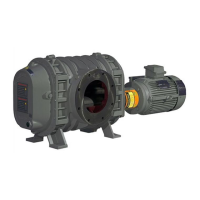
